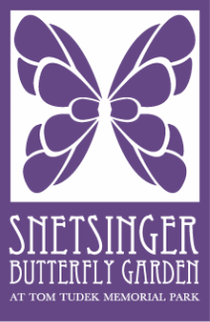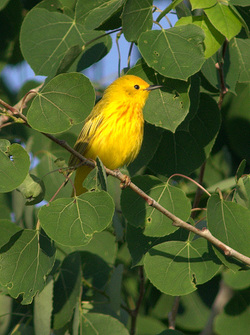|
|
yellow warblerSetophaga petechia
Identification: This is the only all-yellow bird that comes to Pennsylvania. It’s very small, with a rounded head and beady black eye. Males have rust-colored streaking on the breast, while females and juveniles tend to be a more muted yellow. Its beak is pointed and somewhat long for a warbler. Its appearance varies by region and season. It has recently received a new Latin name, so books may show a different one.
Behavior: The Yellow Warbler is an active bird, foraging in trees and shrubs to glean insects. During breeding season the male may perch on a treetop and sing. When parasitized by the Brown Cowbird, the Yellow Warbler will build a new nest right over the cowbird egg. Reportedly some nests accumulate several tiers! What brings it to the SBG? Food, cover, and nesting sites. The Yellow Warbler consumes a mostly insect diet and the native plants at the SBG attract numerous insect species. Its most preferred nesting site is a branch in a willow tree, but nests have also been observed in hawthorn, dogwood, and raspberries among others. Open woodland and old fields (like SBG) are characteristic habitats. In Summer 2014 a pair was observed in the center of the SBG habitat; though the nest was not discovered, it is likely that the pair was nesting. When can I see it? Spring, summer, fall. The Yellow Warbler migrates to the Caribbean and northern South America for winter. |


